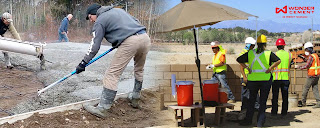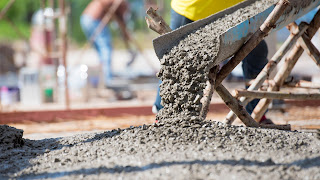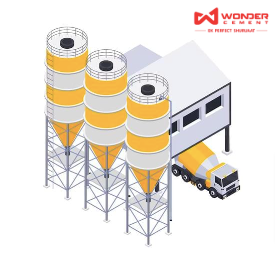Pouring the concrete in winter and summer: What's the difference?
While concrete is a vital element used in several residential and commercial buildings, it is also one of the trickiest substances to work with because it can change the temperature when exposed to different climatic conditions during the early stage of construction.
Concrete manufacturers usually rely on cement manufacturers like Wonder Cement that provide quality cement.
Perfect weather condition is a myth whenever we talk about concrete pouring and curing. We are not always lucky to experience the best weather conditions for concrete pouring and curing. Many people use heated enclosures to prevent concrete from freezing during cold weather. Alternatively, many people also use sunshades, windbreaks, and sufficient manpower for the proper pouring of cement concrete in hot weather.
Pouring the concrete in winter
Unlike working with concrete in summer, pouring concrete in winter cannot attain minimum compressive strength. When concrete is mixed with water, a chemical reaction takes place, which results in an internal crystallization of the concrete. When fresh concrete is poured or exposed to freezing temperatures, the water in the concrete will freeze, which causes cracks and shrinkage reducing the durability of concrete. Experts believe that during winter the temperature should not dip below 40 degrees Fahrenheit.
Pouring the concrete in summer
Concrete is known to set quickly in summer compared to cold conditions. Under favourable weather conditions, Concrete can settle within 8 to 48 hours, and within weeks or nearly a month, it cures properly reaching its full strength. However, contractors should set the maximum concrete temperature limit to 95 degrees Fahrenheit. Contractors believe that the temperature beyond that leads to thermal cracking. It can lead to early strength, which negatively impacts the durability of concrete.
Tips for protecting the concrete in winter
Store the concrete in a warm and heated area until it is ready for use.
Warm the frozen ground with heaters.
Use cold-weather products for faster curing.
Heat the elements of concrete or mix the concrete with hot water.
Add more cement to the mix.
Use the vacuum to quickly remove the bleeding water.
Tips for protecting the concrete in summer
Use summer-weather products like sunshades or windbreaks to avoid harsh conditions.
Avoid pouring during the hottest part of the day.
If possible try to work early in the morning for getting favorable cooling conditions.
Mix the concrete with cool water to help cool down the temperature.
Sprinkle cold water in the area before pouring the concrete.




Comments
Post a Comment